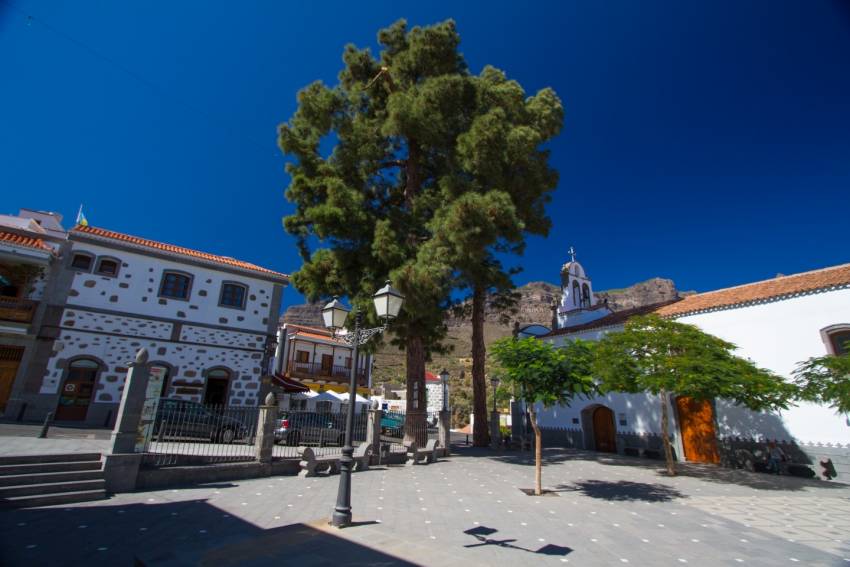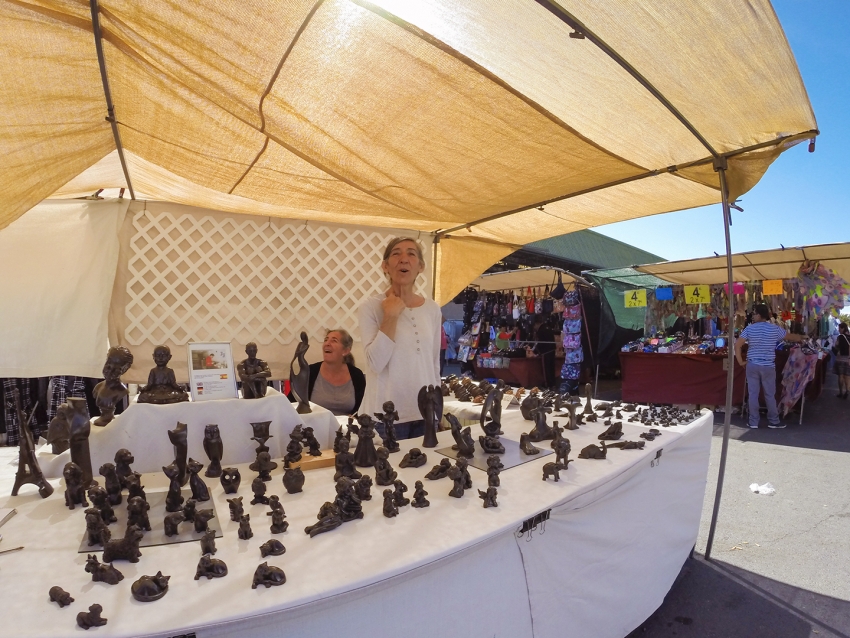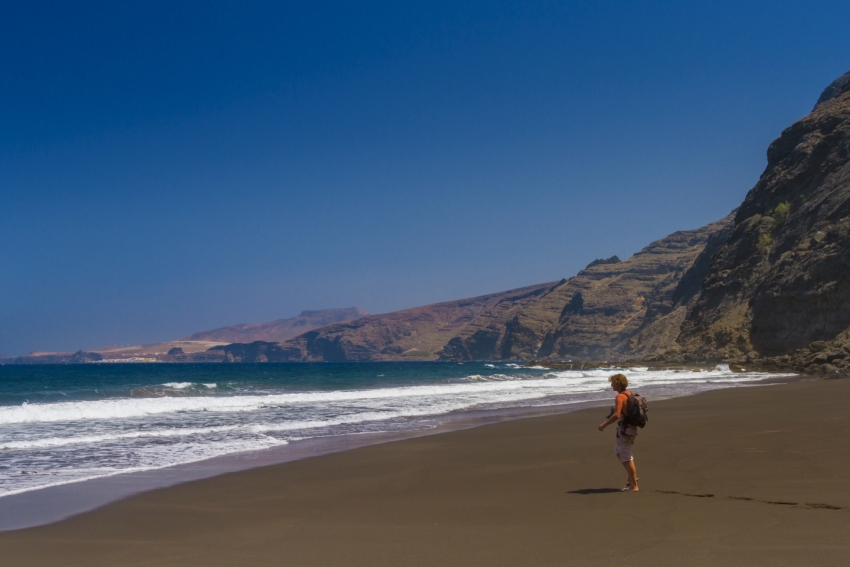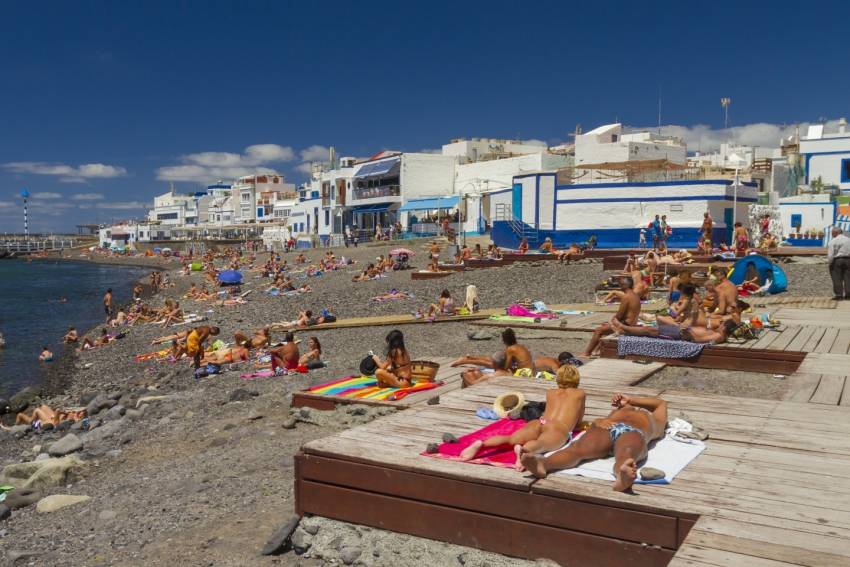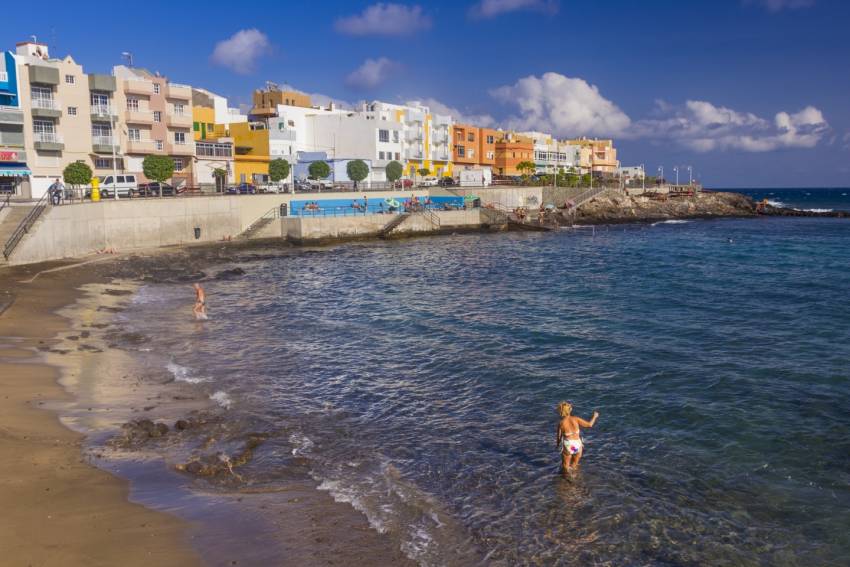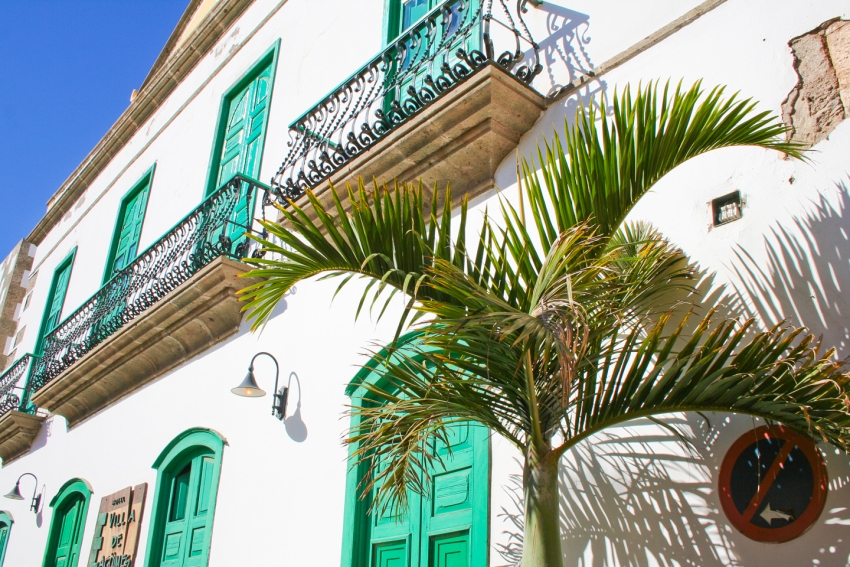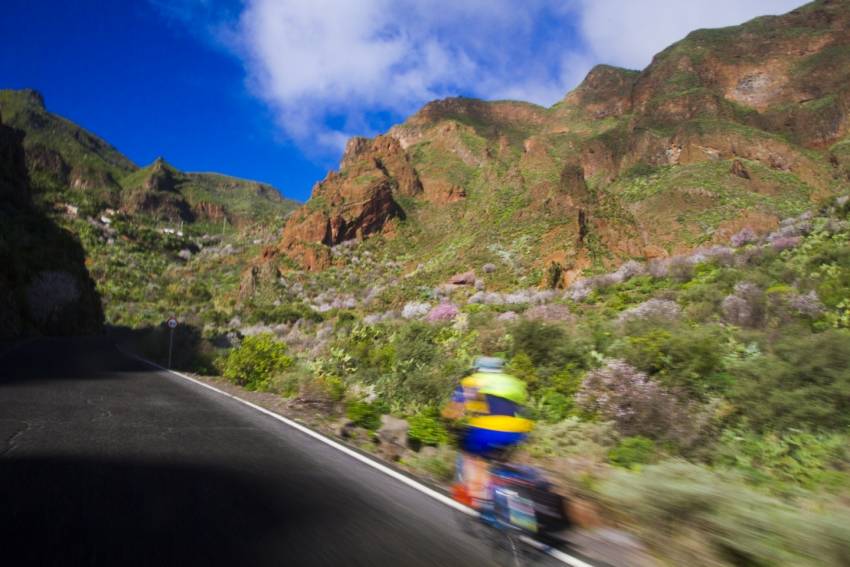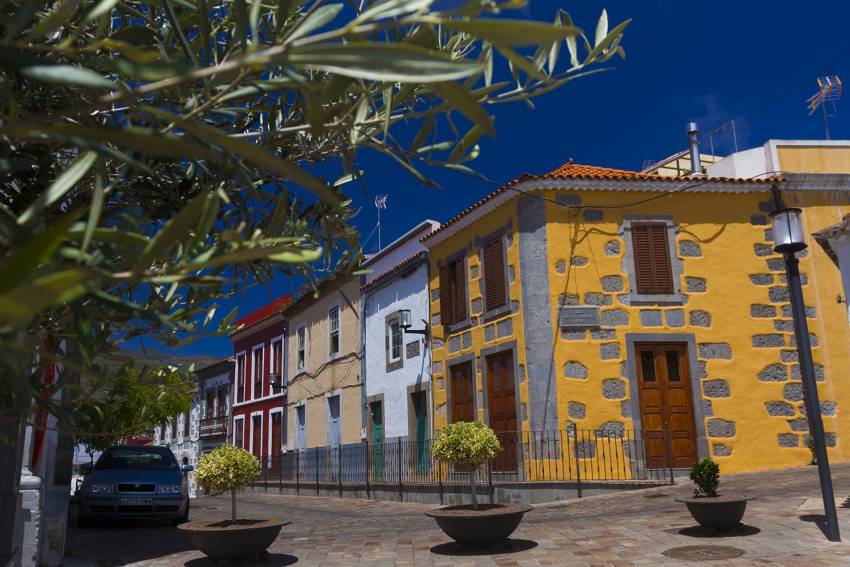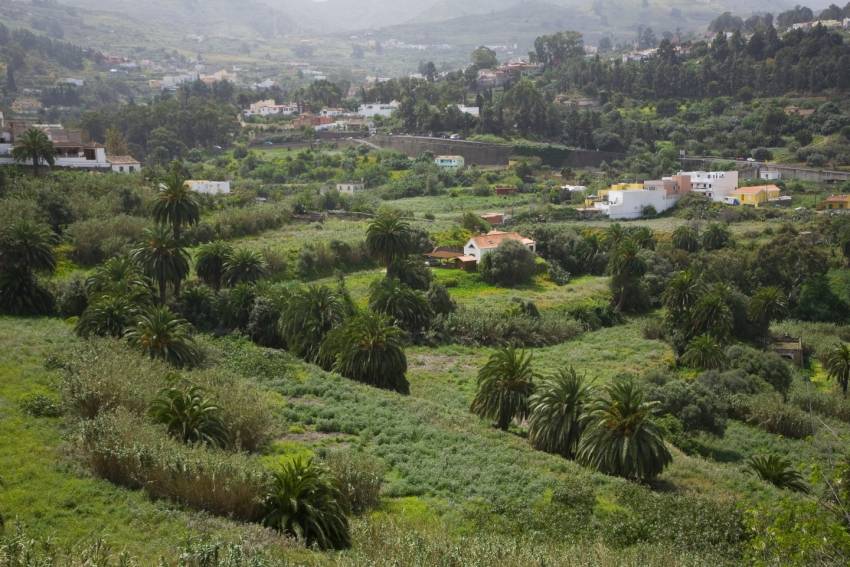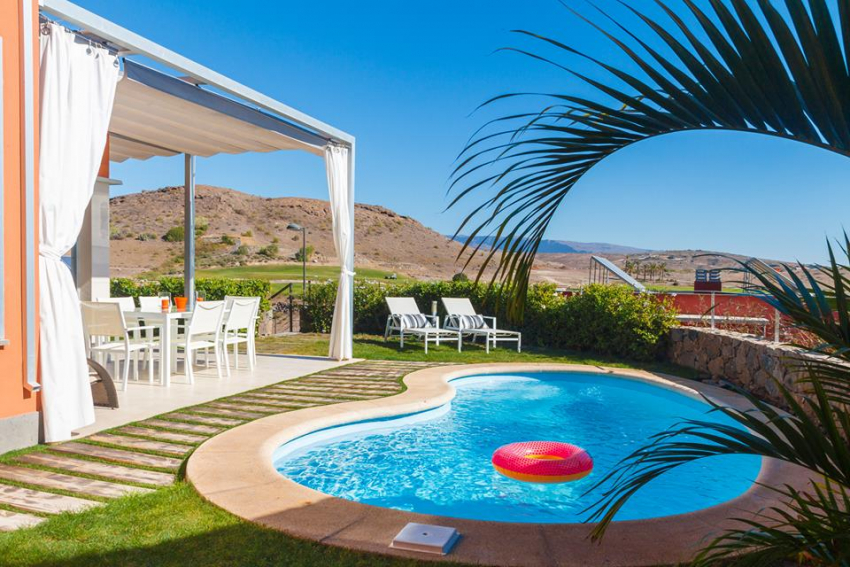Tunte Market: Local Produce For Local People
Tunte or San Bartolome de Tirajana market is a local affair held in the hill town early every Sunday morning.
San Fernando Market On Wednesdays And Saturdays
San Fernando market is one of the big three in south Gran Canaria along with Puerto Mgán and Arguineguín. The location isn't as pretty as its rivals but it's far more convenient if you're staying in Playa del Inglés or Maspalomas.
The stalls here sell everything from local produce to Moroccan leather (most are also at the other markets).
Faneroque Beach: Gran Canaria's Least Visited Beach
Faneroque beach makes the more famous GüiGüi beach feel like Puerto Rico on a busy Sunday afternoon. If you make it, and few do, you'll have it all to yourself except for the rusty bulldozer.
Popular Pebbles At Puerto de las Nieves
Puerto de las Nieves in north-west Gran Canaria is more famous for its seafood than its beach. A shame, as few realise that the area gets some of the best weather on the island and that PDLN beach is a calm, sunny haven with fishing boats on the pebbles rather than sun loungers.
Arinaga: Gran Canaria's Most Improved Town
Arinaga's attractive promenade, a great natural swimming pool and decent seafront restaurants make it an excellent east coast lunch and swim stop. Just up the road is the world-famous El Cabron dive site and the unassuming but ecologically important Arinaga dunes reserve.
Agüimes Hill Town
The cobbled old town, with its vast church and squat, heat-proof Canarian houses is the prettiest example of a Gran Canaria hill town in east Gran Canaria. It's well worth a wander.
Caves, Bees And Blossom At Guayadeque Gorge
The Guayadeque gorge is easily the most interesting day trip in East Gran Canaria, especially combined with Aguimes old town and an afternoon swim at Arinaga. It's also a pain in the neck for visitors.
You'll get one from looking up at the high cliff walls and cave houses, then from ducking into the cave houses and chapel. Even the restaurant at the end of the road is carved into the rock.
The hum
Sound carries in the gorge and you'll hear dogs barking from their cave kennels and the shrill cry of kestrels as they harry the buzzards overhead. And then you'll notice the hum.
From their hives clustered high up on the valley sides Guayadeque's bees feast on a rolling buffet of flowers. The first course is a feast of pink and white almond blossom in January, followed by yellow broom, purple lavendar and blue bugloss flowers. There's always something in flower here: Guayadeque is one of the most biodiverse spots in Europe, home to dozens of unique Canarian plants.
Try the honey in the cave shops by the chapel half way up the valley.
Cavemen
Guayadeque was a stronghold for the island's original inhabitants. They were the valley's first troglodytes and their traces are everywhere. Visit the interpretation centre at the beginning of the valley road for details on their lives here and the traces they left behind.
Modern day locals still live in cave houses in the valley, although many have turned them into rural houses for visitors. In the old days it wasn't just the people that lived in cavesbut entire farms with everything from cows to rabbits dwelling inside the rocks.
Alex Says: Guayadeque is vertigo-sufferers gateway to the landscapes of central Gran Canaria. You get the monumental cliffs and rocks of the cumbres without steep drop offs.
Frequently Asked Questions - FAQ
Here's a growing list of FAQs that we get at Gran Canaria Info. If your question isn't here, then please ask us in an email or via a Facebook message. We'll answer ASAP.
Can I drink the Tap Water in Gran Canaria?
The island's tap water is perfectly safe to drink, wash in, cook with and brush your teeth with. It just doesn't taste too good as it's made from desalinated seawater. Nobody on the island drink the tap water unfiltered and most buy drinking water in five or eight litre bottles.
Are there cockroaches?
There
Can I get marmite, sausages, teabags?
What’s the weather
Which resort
airport transfers
Nightlife
Touts
San Mateo: Gran Canaria's Farming Town
You don't see many wellies in Gran Canaria but San Mateo, as the island's main farming town, is where they are concentrated. With rich soils and plenty of rain, it's main focus has always been agriculture rather than tourism. Despite a madcap plan for a cable car that doesn't look like changing anytime soon.
Santa Brigida: Gran Canaria Hill Town With A Pretty Market
Santa Brigida town was used by the British as their summer Hill Station when they controlled the coal trade in Las Palmas port in the late 19th and early 20th Century. Nowadays it a quiet residential town with a great weekend market (and a great wine stall) and a couple of excellent restaurants.
Gran Canaria Info recommends:
- Default
- Title
- Date
- Random

